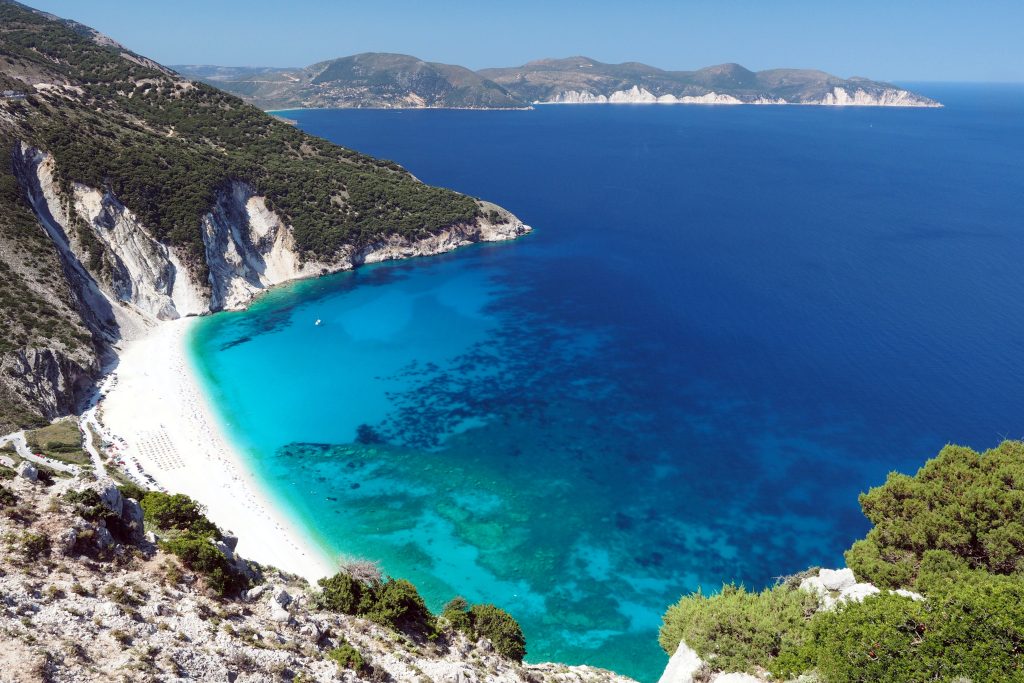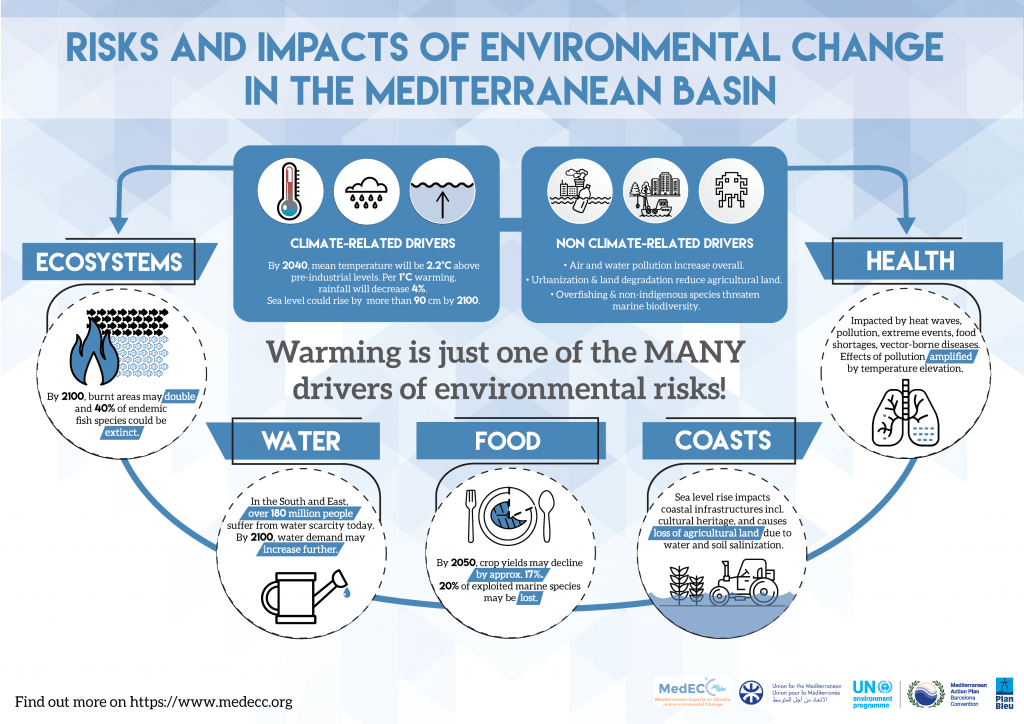The Mediterranean was the lifeblood of early civilisation, and it remains a vital centre in the modern world. It acts as a bridge between several continents, and many countries, and traditions. In fact, there are 22 different nations located along its 46,000 km coastline. The Mediterranean sea sits between Asia, Africa, and Europe, and the region houses some 480 million people. It is also a place of great natural diversity. However, this state is increasingly at risk from the effects of climate change.
In response, the United Nations Environment Programme developed the Mediterranean Action Plan (MAP). This article looks at the origins of that programme and what it has achieved so far.

Is the Mediterranean a ‘Hot Spot’?
Certain regions of the world are ‘hotspots’ of climate change. Generally, they are identified by ‘vulnerability’ and ‘climate response’. Vulnerability refers to the impacts of climate change on the region’s overall health. Climate response is the extent to which global warming is hurting its environment. Together, the two scales help us assess the level of damage.
Economic activity in the Mediterranean occurs mostly in coastal areas. Consequently, livelihoods depend on the sea for food, tourism, or agriculture. Many of these activities are extremely sensitive to climate. As a result, the region is rated as very vulnerable to climate change.
The region also relies on its biodiversity. There are some 10,000-12,000 marine species in its waters. Unfortunately, human activities have weakened the region for some time. 20-30% of its species are endemic and are severely at risk from over-fishing, hazardous waste, and damage to habitats.
In addition, the Mediterranean’s climate has changed in a number of ways. Since the 1970’s air temperatures have been increasing. Also, annual rainfall has been falling, causing water scarcity. In addition, sea levels have been rising faster than many other regions of the world.
In terms of both vulnerability and climate response, the Mediterranean region has indeed become a hotspot of climate change.
What is the Mediterranean Action Plan?
The Mediterranean Action Plan (MAP) was created in 1975. It is part of the United Nations Regional Seas Programme and its framework was later adopted from the 1995 Barcelona Convention. 22 countries from that convention pledged to protect and recover the Mediterranean.
The 7 Protocols of the Mediterranean Action Plan (MAP)
The MAP adopted the 7 protocols from the Barcelona Convention:
- Dumping: This protocol halts waste dumping. It prohibits all dumping or incineration activities from ships and aircraft at sea.
- Prevention and Emergency: Preparation for oil and hazardous or noxious substance (HNS) spills. It ensures that all parties are ready for emergencies and co-operate across political lines.
- Land-Based Sources: Stopping sea pollution from land-based activities. It aims to phase out the use of toxic substances and prevent them from reaching the sea or soil.
- Specially Protected Areas and Biological Diversity: Promoting the conservation and sustainable use of land. It protects areas of natural or cultural value and endangered species of flora and fauna.
- Offshore Protocol: Tracking pollution from all offshore activities like oil and gas drilling. It is concerned with measuring the effects on areas indirectly affected by pollution.
- Hazardous Wastes: Reducing and eliminating waste generation. All waste disposal is managed for better human and marine health.
- Integrated Coastal Zone Management: Protecting specific ecosystems by ensuring the sustainable use of their zones. Coastal and maritime activities must adapt to protect fragile coastal zones.
What is the current situation?

There have been many gains in sustainability and environment policy over the last decade. In addition, awareness of the issues has grown. Unfortunately, these changes have not been enough to stop further decline in the Mediterranean environment. Nor have they helped communities adapt to the effects of climate change.
Greenhouse gas emissions were in decline until recently. Sadly, levels are rising rapidly again.
Consequently, future policy needs much greater collaboration between local, regional and national organisations. All parties need to commit to the Mediterranean Action Plan and the UN’s SDG’s.
Most importantly, urgent action on climate change and its impacts must take place at an international level. In this respect, SDG 13 and the MAP offer clear directions for protecting this vital region.
To learn more about climate change, the SDG’s, and other international efforts to address its impacts, check out the THRIVE blog and join our community.


















